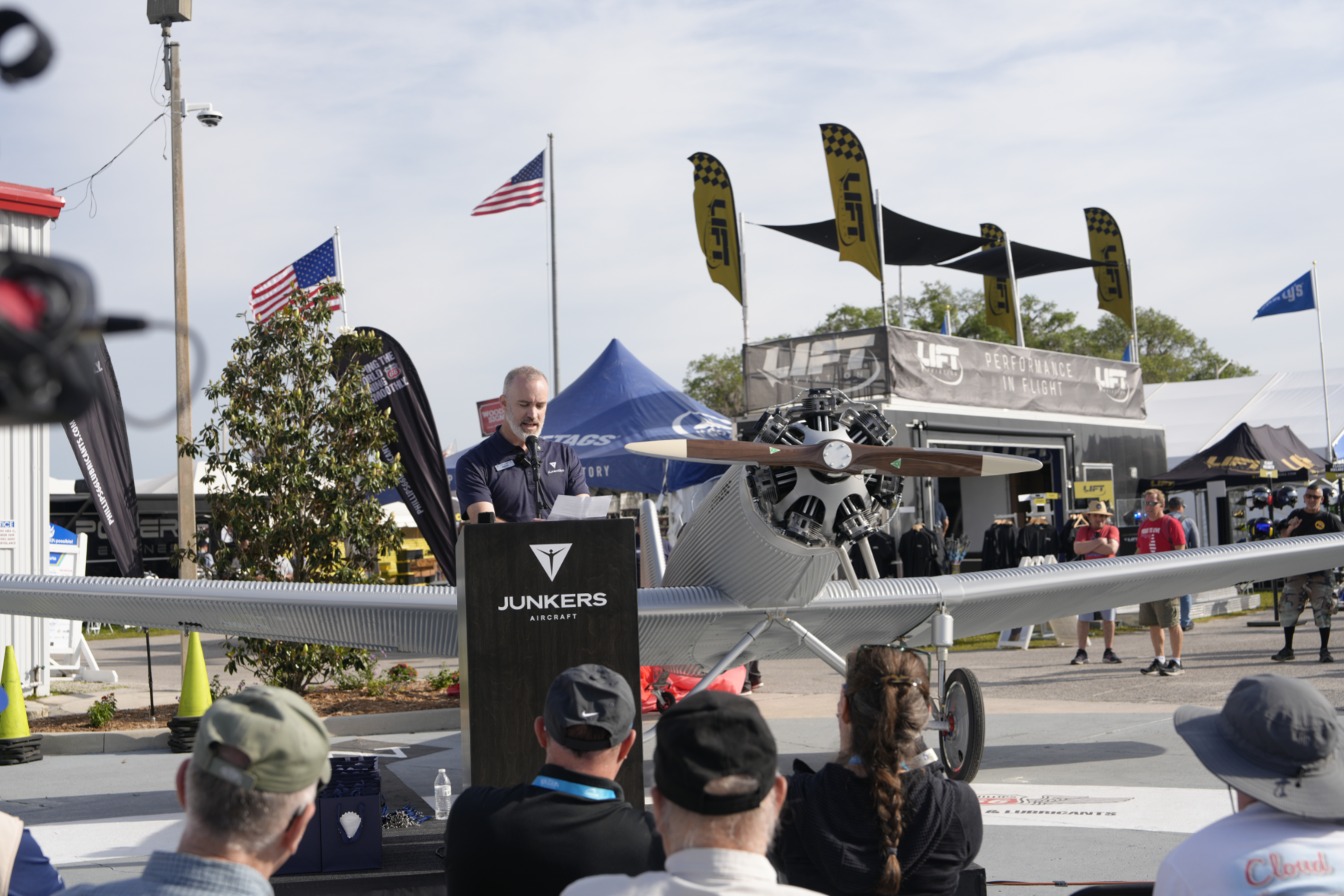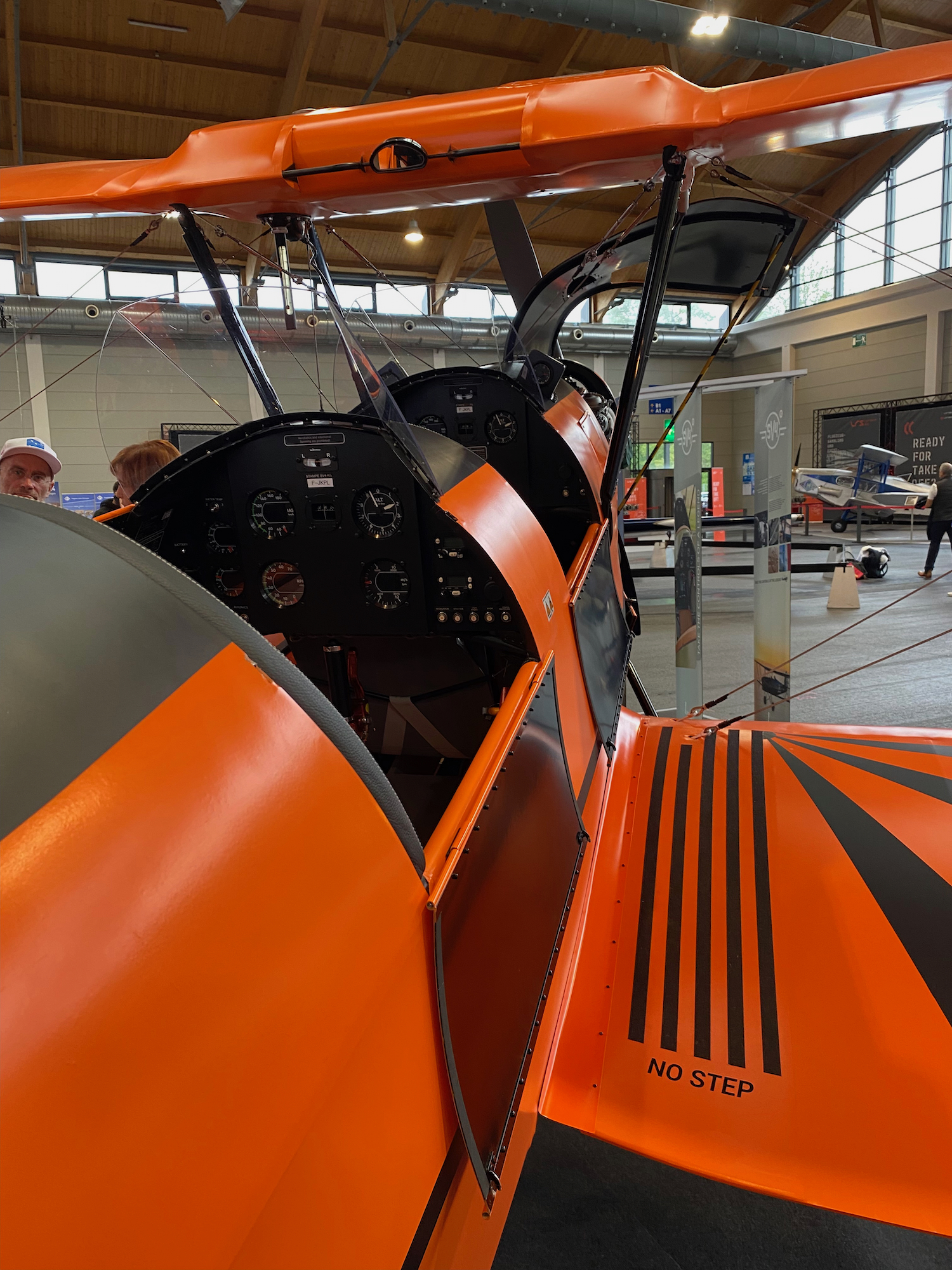Editor’s Note: Correspondent Dave Unwin is at the AERO show in Friedrichshafen, Germany, this week and will be reporting on news from the show. Here’s his first report.
Europe’s top general aviation event, AERO at Friedrichshafen, Germany opened on Wednesday, April 17, and runs through Sunday. It is no exaggeration to say that AERO has grown to become one of the biggest and best GA events on the planet—and certainly the biggest outside of North America.
This year is the 30th time the event has been staged and the organizers claim that more than 680 exhibitors from 36 countries are attending, which may well make the 2024 AERO the biggest ever.

The full-scale Me163 uses a small jet engine. Imagine this at the next local pancake breakfast.
The amount and diversity of aircraft on display was truly breathtaking, from a full-scale Me163 replica, powered by a small jet engine typically fitted to self-sustaining sailplanes, to the very latest bizjets. Unsurprisingly, there were several electric aircraft on display, and Bristell—in partnership with H55—had flown its final prototype of the electric Bristell B23 Energic to the show. It is intended to go into production in 2025.
China’s Rhyxeon General Aircraft Co had a pair of electric aircraft on display, one on wheels/skis and one on floats, while Aura Aero from France had a trio of its two-seat aerobatic trainers on show, including the electric Integral E.

The Chinese Rhyxeon.

Aura Aero’s aerobatic trainer.
One aircraft that generated a lot of interest was the Junkers A50 Heritage, which was also seen at Sun ’n Fun. This is latest version of the art-deco 1930s style two-seater, but where earlier versions were powered by a Rotax 912, this one is fitted with a Werner seven-cylinder radial engine. It looked stunning, and I think could really appeal to the American sport flyer. Flight testing is due to start in June.

The Junkers A50 Heritage introduced at Sun ‘n Fun. (Photo: Amy Wilder)
Staying with the vintage theme Belgian company Ultralight Concept had their gorgeous full scale replica of the classic Stampe SV-4 on display. Powered by a Rotax 912 of either 80 or 100 hp, it has a maximum takeoff weight of 600kg (1320 pounds), a stall speed of 35 knots, cruises around 75 knots and has a Vne of 95 knots. I’ve flown an original Stampe a few times, and if this replica flies as good as it looks they’re almost certainly onto a winner and I hope to be flight testing this machine later this year.

Ultralight Concept’s full-scale Stampe.
A type I hadn’t seen before was the Norden from famous Czech airframer Zlin. Powered by, you guessed it, Rotax ranging from the 115-hp 914 and 141-hp 915 to the 160-hp 916, this Super Cub lookalike boasted some impressive performance numbers, and also looked like a lot of fun to fly.
At the other end of the speed scale, Italian airframer Porto Aviation Group had its Risen two seat side-by-side speedster on display. This machine is fitted with a V tail and, when powered by a 912iS, is claimed to have a cruise speed of 162 knots TAS at 75% power and 9000 feet, while the 916-powered version is claimed to be able to reach almost 200 knots at sea level! I was particularly impressed by the size of the cockpit canopy, which is a very large blown single piece transparency.
Swedish airframer Blackwing also had three different versions of its two-seater on display powered by either 912,915 or 916 engines. All three variants fall within the 600kg (1320-pound) LSA rules, and are stressed to +4.4 and -2.2G. Stall speeds are between 35 and 44 knots, while top speed for the 916-powered version maximum speed is a highly impressive 200 knots. End even the 100-hp version is claimed to be able to cruise at 157. Climb rate for the 916 is an amazing 2500 feet per minute.
Another type sporting a Rotax 916 iS was the Carbon Cub UL. Marketed in Europe as a 600kg microlight, this aircraft—which is already well established in the US—albeit with a Lycoming, promises to be a very capable bushplane. Two other machines powered by a Rotax 916 iS and promoted at the show were an RV-9, which boasts impressive performance for a machine with a fixed undercarriage, and a Lockwood AirCam. This had two 916 iS engines, and have greatly enjoyed flying an AirCam powered by a pair of 912s, the prospect of having two 916s out on the wing was almost enough to make me salivate.

The new AirCam instrument panel. This sightseeing twin is going to get the Rotax 916 iS for even better performance.
A real innovation was the turbulence cancelling technology from Turbulence Solutions. Claimed to reduce the negative effects of turbulence by more than 80%, it uses a wing-mounted sensor and a powerful processor to make small “flaplets” introduce differential control pulses. I flew the simulator, and if it’s as good as they claim the system could be a real game changer!
More tomorrow, on day two of AERO 2024…


Dave,
Read your article. Had a question towards your comment on a RV-7 having a Rotax engine. I know Phil Lockwood has built a firewall forward for the RV-9. Do believe Dan reported this as well. So just curious if Phil is now taking on the RV-7 well with a Rotax?
Enjoy your time in Friedrichshafen!
Thanks for the note. Dave confirms he meant to say RV-9. Lockwood still has work to do getting the RV-9/Rotax program running from a manufacturing side of things.
Apologies Larry – a long day and fat fingers = typo!
I am especially excited to hear about the Stampe, Dan. Will the SV-4 be certified as an LSA in the United States?
Tristan, this article is by Dave Unwin who replied, “I’ll find out tomorrow Dan. —Cheers, Dave”
Hi Tristan, I’m hoping to fly it very soon – will try and find out more then.